How to Build the Foundations of a Social Media Strategy That Actually Works
Jack Young
- Last Updated: 14 May 2025
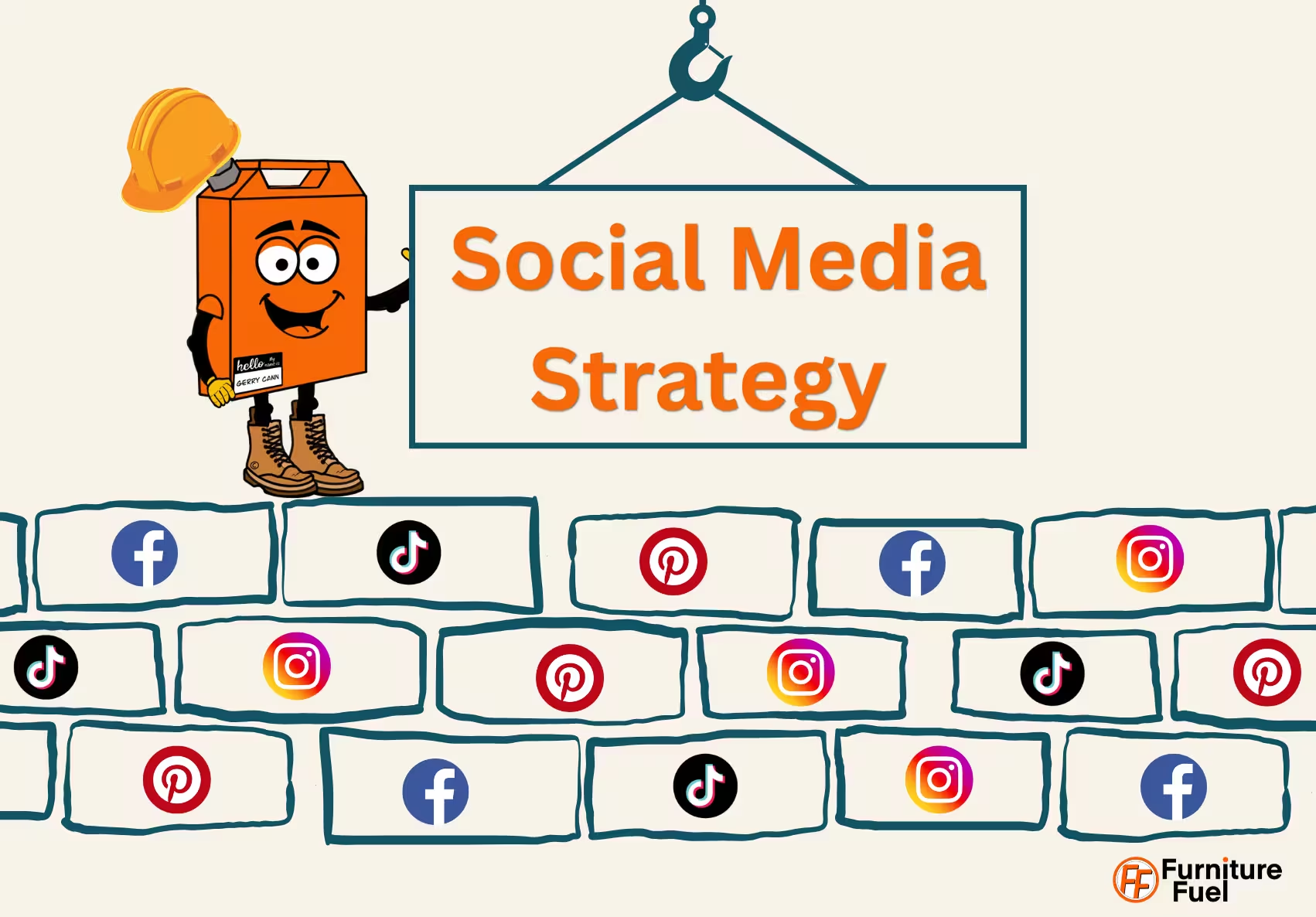
Table of Contents
Key Takeaways – Building a Social Media Strategy
- Consistency beats chaos: Jumping on every trend creates brand confusion. Stick to content that fits your brand’s tone and purpose.
- Algorithms are unpredictable by design: No one outside the platform truly knows how they work—they evolve with user behaviour. Success comes from ongoing experimentation and analysis
- You’re competing with everything: Not just other brands, but every scroll-worthy post, from pet videos to personal updates.
- Focus on value, not vanity: Content that entertains, inspires, or educates builds more trust than constant sales pitches.
- Meme marketing is risky: It can fall flat or invite legal trouble. Be authentic or steer clear.
- Use UGC: It’s trusted, authentic, and taps into community-driven credibility.
- Trends fade, identity lasts: Build a strategy that’s durable, adaptable, and grounded in what your audience actually cares about.
TLDR - Core Summary: How to Build a Successful Social Media Strategy
A successful social media strategy isn’t about chasing algorithm “hacks” or jumping on every trend—it’s about consistency, knowing your audience, and staying true to your brand. You’re not just competing with other furniture businesses, but with everything in users’ feeds—cat videos, holiday snaps, viral memes. Your content needs to be “thumb-stopping” and genuinely valuable to stand out. That means focusing on three core content types: entertaining, inspiring, and educational. Social media can be transactional—but less is more. Aim for the 80/20 rule: 80% of your posts should offer value, spark connection, or entertain; 20% can focus on selling. Too much promotional content turns people off.
Why Foundations Matter More Than Trends
Most social media advice today causes more harm than good.
One minute, the advice is to do one thing—next week, it’s the complete opposite. Before you know it, your brand looks like your Netflix recommendations after a weekend binge. First rom-coms, the next crime thrillers, then suddenly a documentary about alpacas. This happens because constantly switching strategies makes it easy to lose your brand identity.
For the most part, this article avoids the usual “try this, try that”. Instead, it gives you a clearer view of the building blocks of a solid social media strategy. With that foundation in place, you can post with purpose, stay consistent, and support long-term growth, without the anxiety of chasing every trend.
Understanding Social Media Algorithms
No one really knows how social media algorithms work, not fully. There are some known elements, but most insights come from testing theories, spotting patterns, and making educated guesses (some better than others).
If someone claims to know exactly how an algorithm works, take it with a large pinch of salt. At best, they understand what’s worked so far. At worst, they’re selling certainty where there is none. Even the Zuckerbergs of this world don’t know every intricate detail of their platforms’ algorithms. They might have the blueprint, but these systems evolve constantly through machine learning and user behaviour.
That doesn’t mean success is out of reach. Social media isn’t easy—but success is absolutely possible. The key is experimentation and ongoing analysis.
What Is an Algorithm?
Below is an oversimplified example of what a social media algorithm could be instructed to do. At its core, an algorithm is just a set of instructions, a recipe. The machine is told to look for something (like engagement) and then act accordingly (e.g., boost a post).
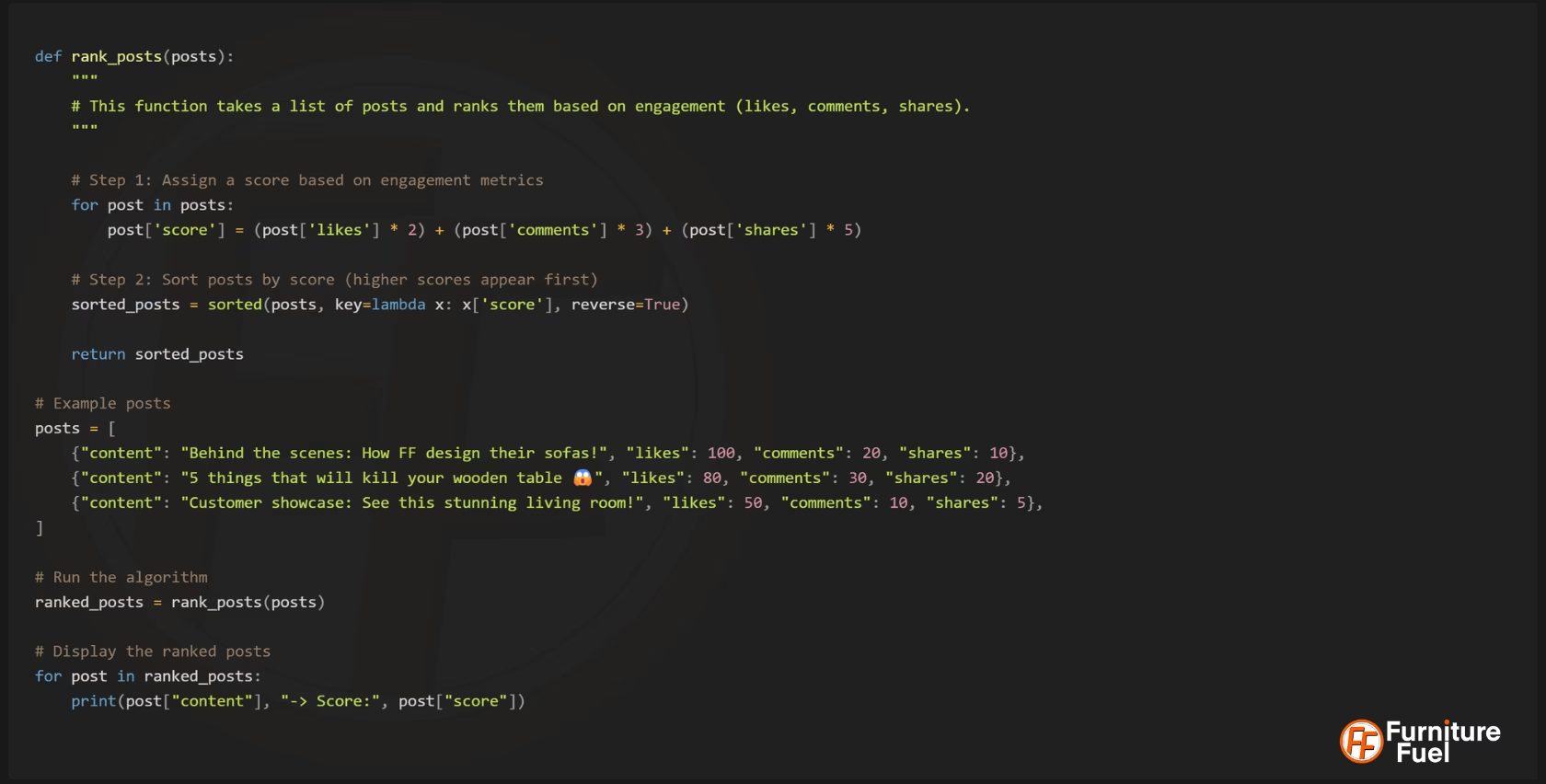
This example algorithm ranks posts based on engagement. Those with more likes, comments, and shares are pushed higher in the feed.
Step 1: Assign a Score. Each post is scored based on its engagement: Likes = 2 points, Comments = 3 points, Shares = 5 points.
Step 2: Sort Posts by Score. Posts are ranked from highest to lowest. This mimics how a feed might prioritise what users see.
Step 3: Display the Ranked Posts. The platform shows the top-ranked posts first, those predicted to keep users engaged.
What Do Real Algorithms Consider?
While engagement is important, actual ranking systems are more sophisticated. Other factors include:
- Recency – Newer posts often get a short-term boost.
- Relationships – Content from people or pages a user interacts with frequently is shown more.
- Content Type – Some platforms prioritise videos over images or text posts.
- User Interests – If someone regularly interacts with interior design content, the algorithm shows them more of it.
- Negative Feedback – Posts that get reported or hidden may be down-ranked.
- Time Spent Viewing – If users stop scrolling to read your post or watch your video, the platform assumes it’s valuable.
Is It Possible to “Hack” a Social Media Algorithm?
Social media algorithms are complex. These systems may have started as simple rule-based algorithms, but over time, they’ve evolved through machine learning into AI-driven systems. Rather than just following fixed rules, they learn from user behaviour and adapt in real-time, constantly refining what content gets shown based on patterns and predictions.
When someone claims to have “cracked the algorithm” (we’ve all seen the videos), it’s unlikely they have actually outsmarted it. What’s more likely is they’ve just tapped into an emerging interest or what harnesses attention at that moment in time. They are just early enough to that party that it seems they have cracked it. Six months later, someone else “cracks it” with something different.
The Algorithm has not randomly changed. It has changed to mirror user behaviour and wider cultural trends.
So instead of chasing hacks, focus on understanding what your audience cares about and how that might be shifting. That’s what the algorithm is doing.
If you’d like to understand more about AI and machine learning affecting furniture retail specifically, check out our other article: Is AI in Furniture Retail Helpful or Just Hype?
The Goals of a Social Media Platform
Social media platforms have two primary goals:
- Increase monthly active users
- Boost average user engagement time
Why? Because advertising is a major revenue stream for these platforms.
The number of active monthly users gives advertisers (like you) a sense of the platform’s potential reach. While you can’t reach every user with your content, the larger the user base, the more likely you are to reach your target audience.
Meanwhile, engagement time matters because the longer people stay on the platform, the more ads can be shown. More time equals more revenue.
And, the average user engagement time matters because the longer people stay on the platform, the more ads can be shown. More time equals more revenue.
The Balance Between User Experience and Monetisation
To attract and retain users, social media platforms need to serve content people actually want to see. That’s where the algorithm comes in. Its job is to serve content that users find interesting and engaging. It tests, it learns, and it adapts. If one type of content doesn’t grab a user’s attention, another is served up. The system continuously learns, refining its recommendations until, ideally, the platform becomes the user’s go-to app.
When a new platform first launches, it usually heavily favours the user experience. Because without users, there’s no platform, no engagement, and no future revenue.
But this user-first honeymoon phase never lasts. Eventually, the platform needs to monetise. Enter: advertising. That’s where the balancing act begins. They must find the sweet spot between monetisation and user experience. If that balance tips too far toward ads, users start to disengage or switch to the next platform.
What Does This Mean for Your Future Business?
Your content must be something users want to see or at least find interesting enough to pause their scroll—it must be thumb-stopping content.
Social media is designed with the user in mind. Without users, there’s no platform. And without a platform, there’s no ad revenue.
To succeed, your content needs to align with the platform’s goals. That means creating posts that attract attention, encourage interaction, and keep people coming back. If your content helps the platform, the algorithm is more likely to reward you for it, pushing your content further.
Sounds simple, right? You scratch their back, they scratch yours.
However, you’re not the only one with your back scratcher at the ready. And it’s not just furniture brands. Social media marketing is tough, not because the rules aren’t somewhat clear, but because of the intense competition for limited attention.
Social Media Competition: Who Are You Competing With?
A quick word on competition. You’re not just competing for attention with other furniture businesses, you’re up against all home improvement businesses. For example, if someone is thinking about a new set of bedroom furniture, but then sees an ad or post for window blinds, they might end up buying the blinds instead. Nothing says, “I’ve got my life together” or, let’s face it, “I’m better than you,” like a shiny new set of blinds, well… maybe a new front door or windows, but you get the point.
However, your toughest competition isn’t just other furniture businesses or home improvement brands. It’s the content people engage with to escape daily life. The cat videos, travel inspiration, or a friend’s funny post. When users open their feeds, they’re not always in the shopping mood. They’re looking for entertainment, connection, and distraction.
Social media is at its heart about entertainment, connection, and distraction—not transactions.
Facebook is experimenting with a new “Friends” tab. Currently US only (April 2025), but could be pushed globally, if successful. Their goal is to create a separate feed with only content from your actual friends, offering less or no algorithmically driven content. It’s to bring back the “OG Facebook”. Will it work? Who knows. It feels like an afterthought. I remember OG Facebook, sending a friend request was more about increasing the number of followers you had than any real connection. It was a signal of popularity in the Darwinian high school days.
What Is Transactional Posting?
Before we continue, let’s quickly explain what is meant by a transactional post in the context of social media. When I talk about moving away from being too transactional, I’m referring to content that’s primarily focused on trying to drive an immediate sale.
Think of the posts that shout, “Save 10%!”, “Clearance Sale!”, “Limited Time Offer – Buy Now!”, or “Lowest Prices Today!”.
While these highlight cost savings, they treat the audience as little more than a wallet waiting to be opened. The assumption is that the savings alone are enough to trigger a purchase.
The issue is, if your social media presence is just a constant stream of discounts and sales pitches, the audience never really gets to understand the value of our products or services at full price. They learn to associate you only with bargains, and loyalty built on discounts alone is flimsy at best.
If you only ever talk about price, you miss the chance to connect emotionally, to educate customers on how your products solve real problems, or to inspire them through authentic stories and user-generated content.
Transactional posts absolutely have their place, after all, 82% of consumers use social platforms to discover and research products.
But the heart of your strategy should focus on building an engaged, informed audience. You are helping the customer buy, not selling them on a solution.
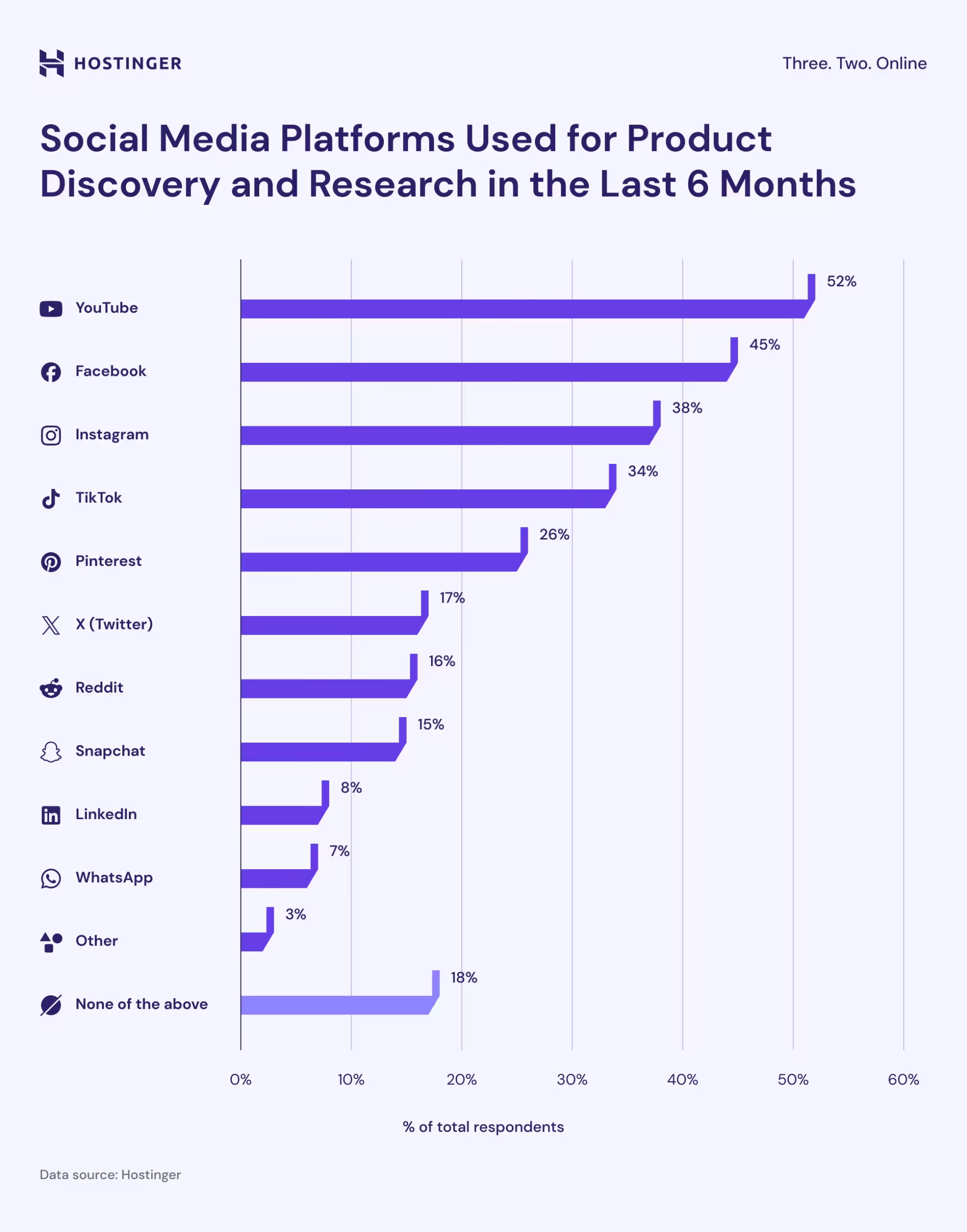
Source: Hostinger, Social Commerce 2025: Definition, Key Trends, and Statistics. Feb 2025
What to Post on Social Media: The Three Core Approaches
“Almost six out of ten consumers (59%) think there is ‘too much’ advertising on social media, with over half (52%) describing self-promotional brand content as exhausting and a third preferring no brand content at all.” Source: Marketing/Beat.
When posting on social media, your content should essentially do one of three things: entertain, inspire, or educate. Ideally, each post should tie back to your business in some way. However, not every post needs to be a direct sales pitch.
Entertain: Create Thumb-Stopping, Relatable Content
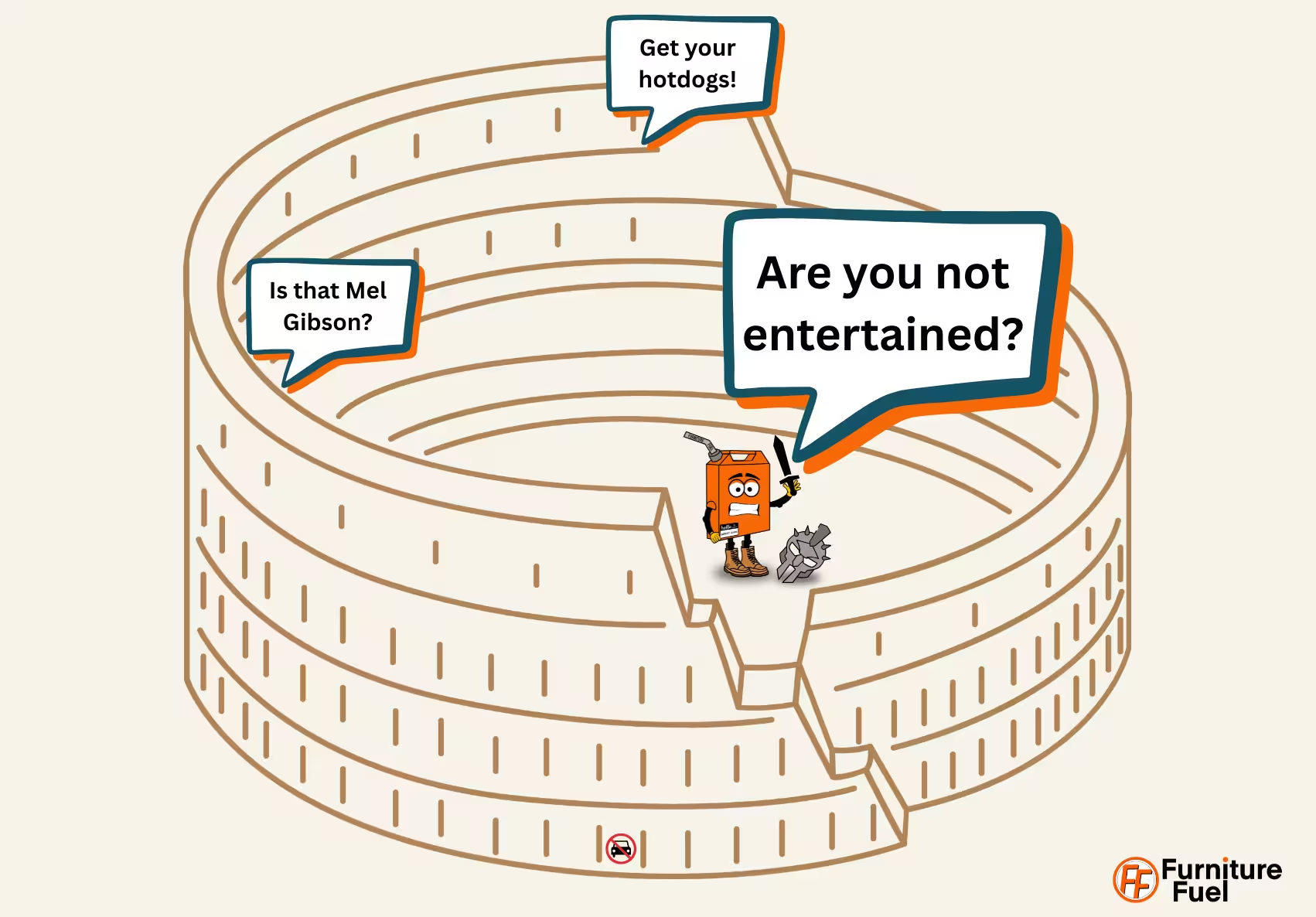
Entertainment is the hardest of the three because most of us aren’t natural entertainers. But you don’t have to be. Entertainment doesn’t always have to mean humour or viral content. The challenge is delivering information in a way that holds attention, whether that’s through humour, storytelling, or engaging visuals.
- Memes & relatable content: If you sell fully assembled products, you might post a funny meme about the struggles of assembling a flat-pack wardrobe.
- Behind-the-scenes bloopers – Show the lighter side of your business with outtakes or funny moments in the showroom.
- Polls – A “this or that” poll featuring two sofa styles can start surprisingly lively debates.
Just remember your audience. What you find funny, they may not.
Personal Story Time
I once ran a “Spot the Difference” game on Facebook. I honestly can’t remember what made me try it. All it took was a £10 tripod and my phone. I set the tripod up on a tall unit, snapped a picture, moved a few things around, and then took a second photo.
The post engagement? Fantastic. There was no prize. People were playing for the fun of it—for the entertainment. The best part? I actually messed up the game. I hadn’t played ‘Spot the Difference’ in years, so instead of removing an item or rotating it slightly, I shifted products to different spots in the room.
If you’re a ‘Spot the Difference’ veteran, you’ll know this counts as two changes: one for the moving of the object from its current spot and one because the object is now in a different location, where something wasn’t before.
When I posted the reveal, I admitted my mistake and turned it into another fun moment using humour. No harm done!
Looking back, this would have been the perfect lockdown game—cost-effective, fun, and consistent. It could have kept your business top of mind for the cost of just your time.
I’ve also posted images of faces in wood that I’ve spotted. Great engagement. A photo of a sofa with the caption, “Do you call this a sofa or a couch?” It was originally posted for keyword research feedback, but it can work as a post on its own, as it promotes light-hearted debates, aka engagement.
When couples visit the store, they rarely agree on what they want. One likes this, the other prefers that. You’ve probably got those “little” compromises going on at home, too. Post those light-hearted debates, ask your followers what side they are on, are you team A or B? Then watch the chaos unfold. You never know who might see it and discover you for the first time.
A Word of Caution on Meme Marketing
Memes can be a great way to boost engagement and make your brand feel more relatable, but they also come with risks. Mainly legal ones.
Most memes originate from copyrighted material: stock photos, celebrity images, or viral video clips. Just because something is widely shared doesn’t mean it’s free to use, especially in a commercial context.
Many businesses assume meme usage falls under “fair use,” but that’s rarely true. If you’re using a copyrighted image to promote your brand, even in an organic post, it could still count as copyright infringement. There have already been multiple lawsuits against brands for this, and it’s only becoming more common.
And beyond legal trouble, memes can quickly lose their power once brands get involved. What feels fresh and funny in group chats can feel cringey or forced when a business joins in, like parents awkwardly using their kids’ slang. What’s viral today can be stale tomorrow. If your audience thinks you’re trying too hard, the whole thing can backfire.
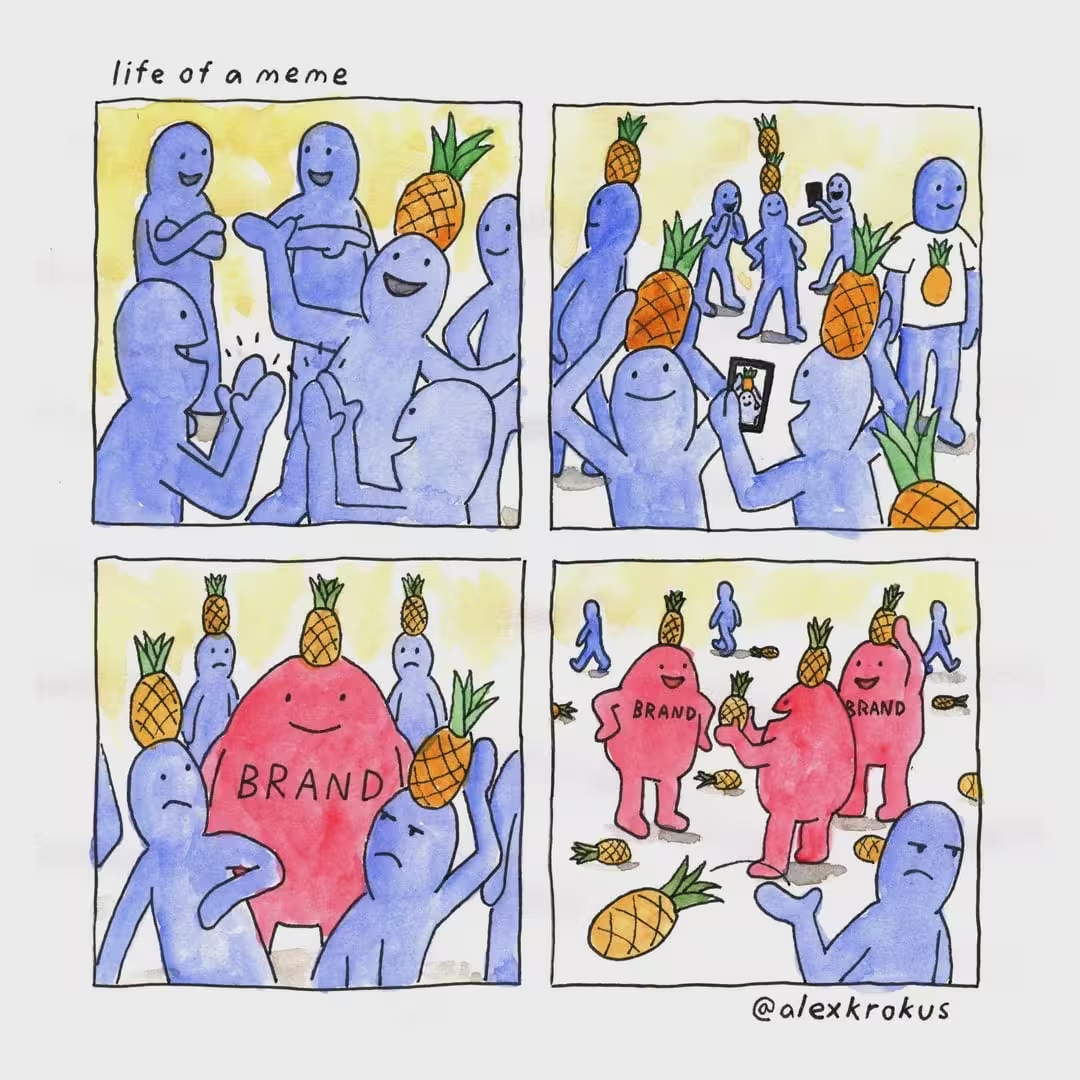
Source: Life of a meme by Alex Krokus, Instagram Alex Krokus.
If you need evidence that brands ruin memes, check out the comment section on Alex’s post.
If you want to stay on the safe side:
- Create your own original memes using in-house images or illustrations.
- Use legally licensed content from stock libraries.
- Avoid using celebrity images or copyrighted material without permission.
But, should you even be using memes at all? Are they quietly destroying your brand?
The Drum’s article on disposable creativity warns against chasing trends without considering brand fit:
“We see it when brands jump on the latest meme without considering whether it fits their tone of voice. Or, when content is made to feed an algorithm, rather than express a point of view. And, also, when high-volume output starts diluting rather than reinforcing what a brand stands for.
Some of this is structural. TikTok’s format rewards frequency. Instagram’s algorithm has shifted to prioritize Reels. YouTube Shorts can feel like a never-ending scroll of near-identical hooks. However, structural pressure shouldn’t lead to creative collapse.” Source: The Drum, Think you’re hacking the algorithm? You might be erasing your brand instead, Chris Edwards.
Inspire: Share Stories, Aspirations, and Lifestyle Ideas
Inspiration content is often easier to create than entertainment, but still requires careful consideration to be effective.
This kind of content shows your audience what’s possible. It could be a beautifully styled room setting, or a photo from a happy customer who’s made their home look like something out of a magazine.
The goal is to show how your products can help them achieve the look they want. Inspiration tends to drive more engagement when your audience already aspires to what you offer. If you’re in the luxury interiors space, you’re halfway there. But if your audience is more price-conscious or sees furniture as a purely functional purchase, you’ll need to work harder to create that emotional pull.
User-Generated Content (UGC)
One of the most effective ways to inspire your audience is to let other customers do it for you.
User-generated content (UGC) refers to anything created by your customers—photos, videos, reviews—that they post online. It’s some of the highest-trust, highest-performing content you can share.
Why? Because people trust people.
A customer sharing their room setup, styled with your furniture, is far more believable than anything a brand says about itself. UGC adds authenticity, builds trust, and helps take the pressure off constantly creating new content yourself.

Why UGC Builds Trust. Customers trust other customers more than brands. Seeing real people enjoying their purchases reassures potential buyers that the product delivers on its promises. It’s social proof in action—if others love their sofa, it must be worth considering. Plus, real-home images feel more relatable than showroom photos, helping customers picture how the furniture will fit into their space.
UGC also acts as a powerful objection handler. A hesitant buyer might not know if that cream sofa will work with their existing wall colour. But seeing a photo from someone who’s already done it? That’s the reassurance they need.
Tips for Getting More UGC
If you’re not getting UGC naturally, try encouraging it:
- Run a monthly prize draw for customers who tag you in a photo or story. A £100 voucher can go a long way if it gets you several reusable pieces of content.
- Repost and engage with every piece you get. Make customers feel seen and valued.
- Build loyalty and an emotional connection so people want to share your products with their friends.
Incentivising UGC is fairer than paying select influencers and ignoring regular customers. And if you play the long game, the best UGC won’t cost a penny. It’ll come from happy customers who genuinely love what you do.
GET the LOOK!
At the start, I mentioned that this wouldn’t be just another “try this” post, but here’s something truly worth considering.
Fashion and furniture often go hand in hand. Trends in colours, fabrics, and styles seen on the runway frequently make their way into interior design. Just like fashion magazines break down a celebrity’s outfit and show readers where to “get the look,” furniture retailers can do the same.
You could create content that helps customers achieve a specific style, whether it’s inspired by a popular TV show, a celebrity’s home, or even a social media influencer. If you know the types of programmes your audience watches. (It may be rather sad, but whenever I spot furniture I’ve sold to customers in a show, I can’t help but go, Oh, we used to sell that!)
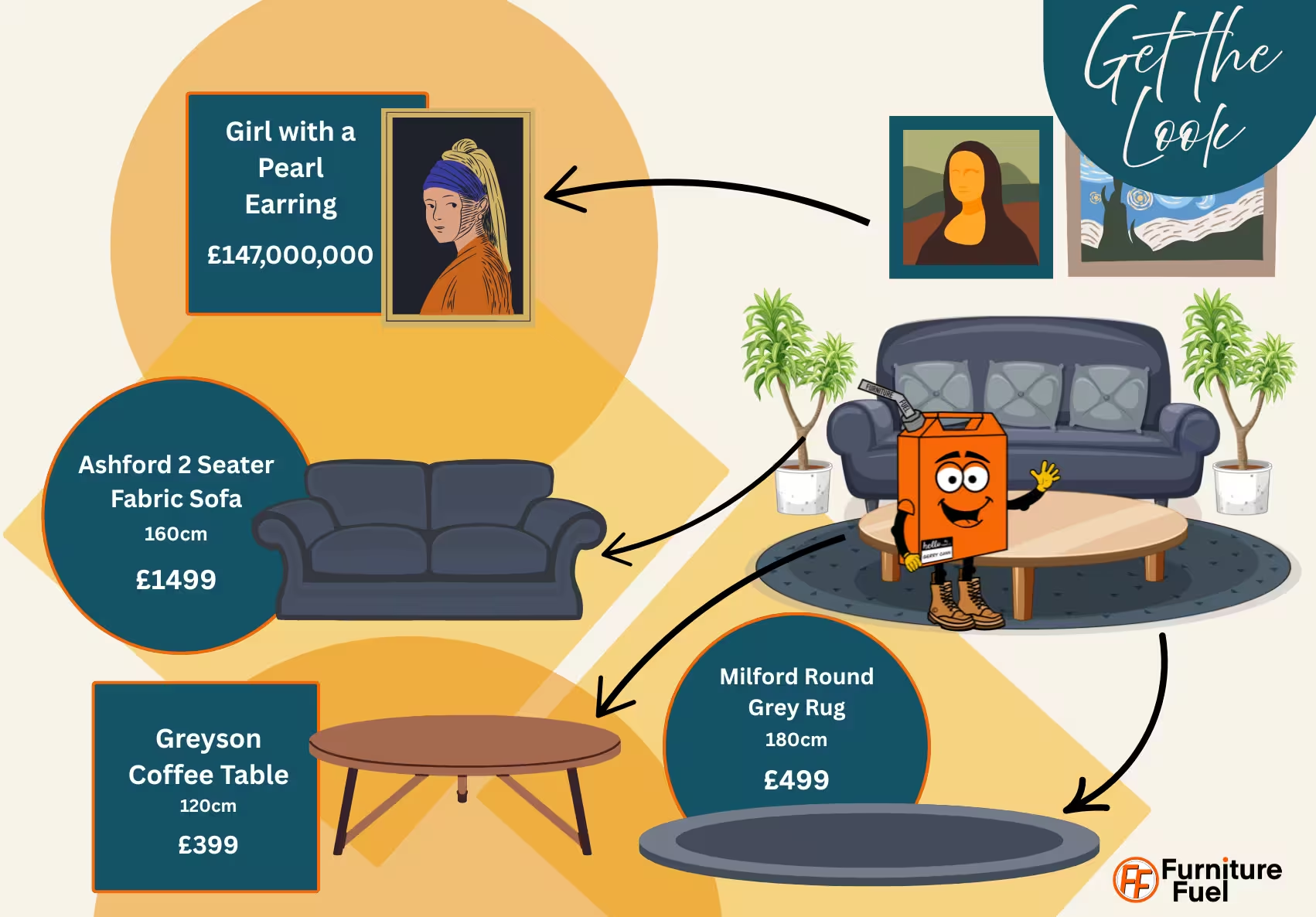
At the very least, consider creating mood boards that tie pieces together, making it easier for customers to visualise how different items work in a space. This type of content not only helps customers style their homes with confidence, but it can also increase your average order value. When they see how a sofa pairs perfectly with a coffee table, or how a lamp complements a sideboard, they’re more likely to buy the full look rather than just one piece.
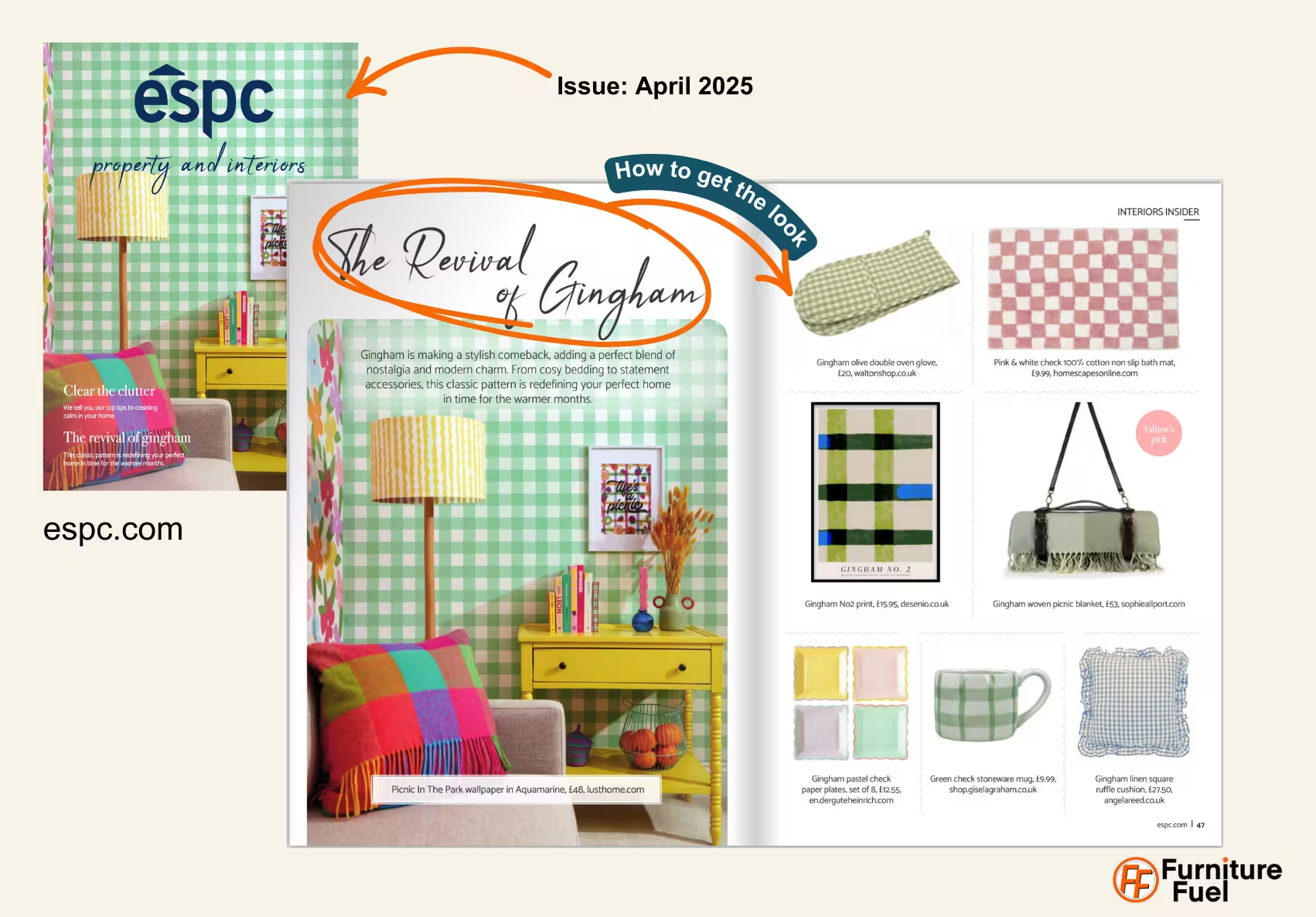
Source: ESPC magazine.
Educate: Help Customers Make Informed Decisions
Educational content is, in theory, the easiest because you already know your products inside out. However, the word educational can often produce feelings of boredom. Educational content doesn’t have to be dull—it only becomes so when presented poorly. Breaking it down into engaging formats (quick tips, comparisons, myth-busting) can make it feel less like a lecture and more like a conversation.
Even in a price-sensitive market, not all customers are purely driven by cost. Some, what we call nomadic buyers, have no brand loyalty and will always chase the lowest price. However, others will choose retailers based on trust, service, and convenience. The goal is to reduce reliance on price competition by offering value beyond the product itself.
For example:
- Instead of “How to Care for Wooden Furniture” (which sounds dull),
- Try “5 Things That Will Ruin Your Wooden Table” (more curiosity-driven).
Education can also showcase your broader values, like your environmental stance. If your products are ethically sourced and someone wants to make a more thoughtful purchase, highlighting this can set you apart from the competition. In rare cases, even if competitors can make the same statement, being the first to make it can give you the edge. So don’t always assume that just because everyone does something, your customer is aware of it.
Avoiding the Curse of Knowledge in Your Content
Just because you know something doesn’t mean your audience does. The small details that seem obvious to you could be incredibly helpful to them. For example, you might know that a sideboard drawer has a latch at the back that can be twisted to remove the drawer completely, but many customers won’t, until they struggle with it.
Don’t assume knowledge—share it! Helpful tips, how-tos, and product insights not only build trust and improve customer experience but also position you as the go-to expert. The more value you provide, the more memorable your brand becomes.
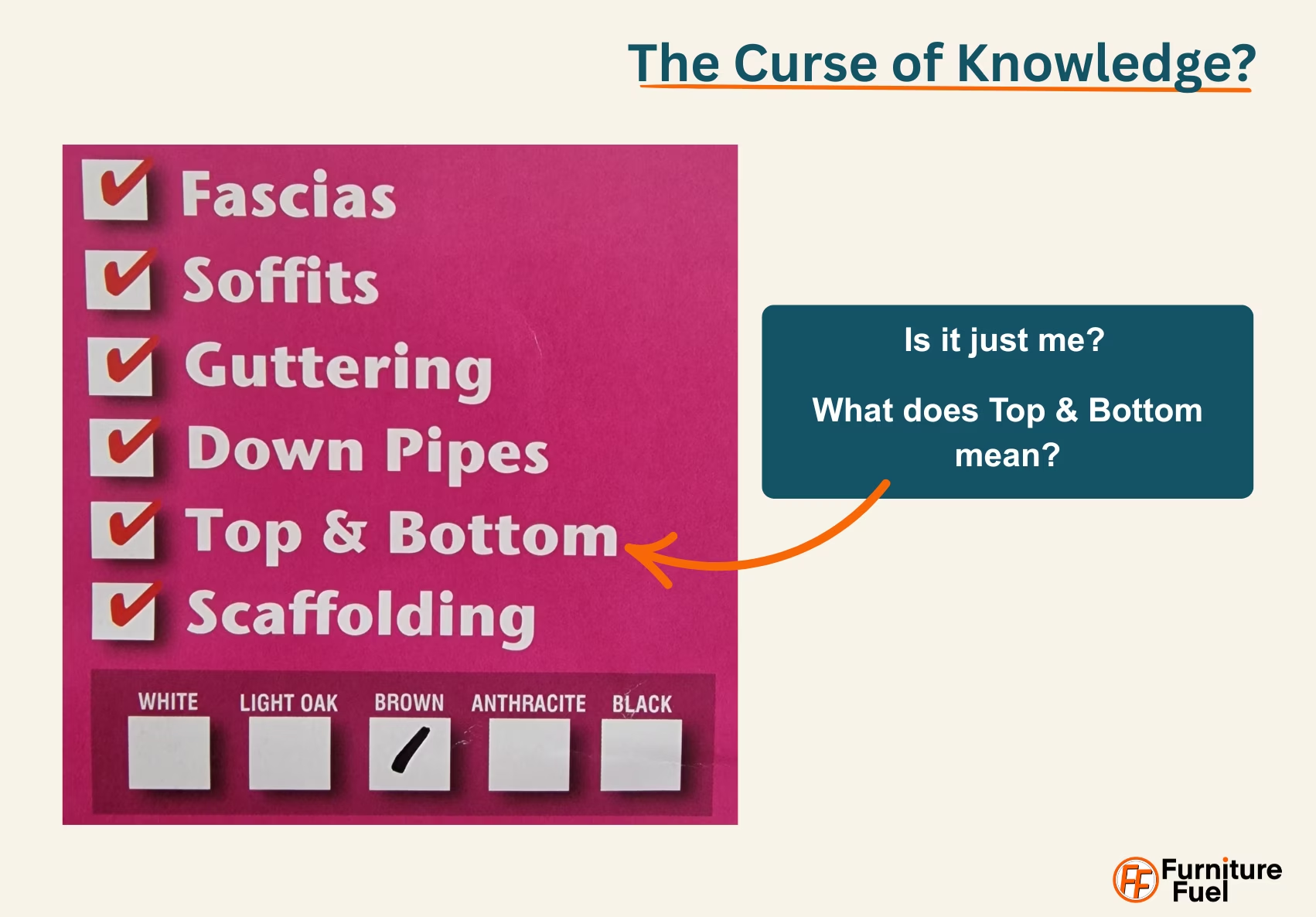
Three’s a Crowd, but Not in This Case
These three core approaches, entertain, inspire, and educate, don’t have to stand alone. For example, you could educate your audience about how your products are environmentally friendly, which inspires them to buy from a company that shares their values. If you can add humour to the mix, that creates a multiplier effect. Bonus points if you manage to combine all three in one post.
It’s not impossible. If you can hold attention with humour while educating your audience about the comfort of a chair, thanks to its zero-gravity lumbar design, this could inspire them to buy, because they believe it will help alleviate their back problems. By educating your audience, you also enable them to feel confident recommending your product to others, particularly those who could benefit from it, like a loved one suffering from back pain. Without that education, they wouldn’t even know to suggest it.
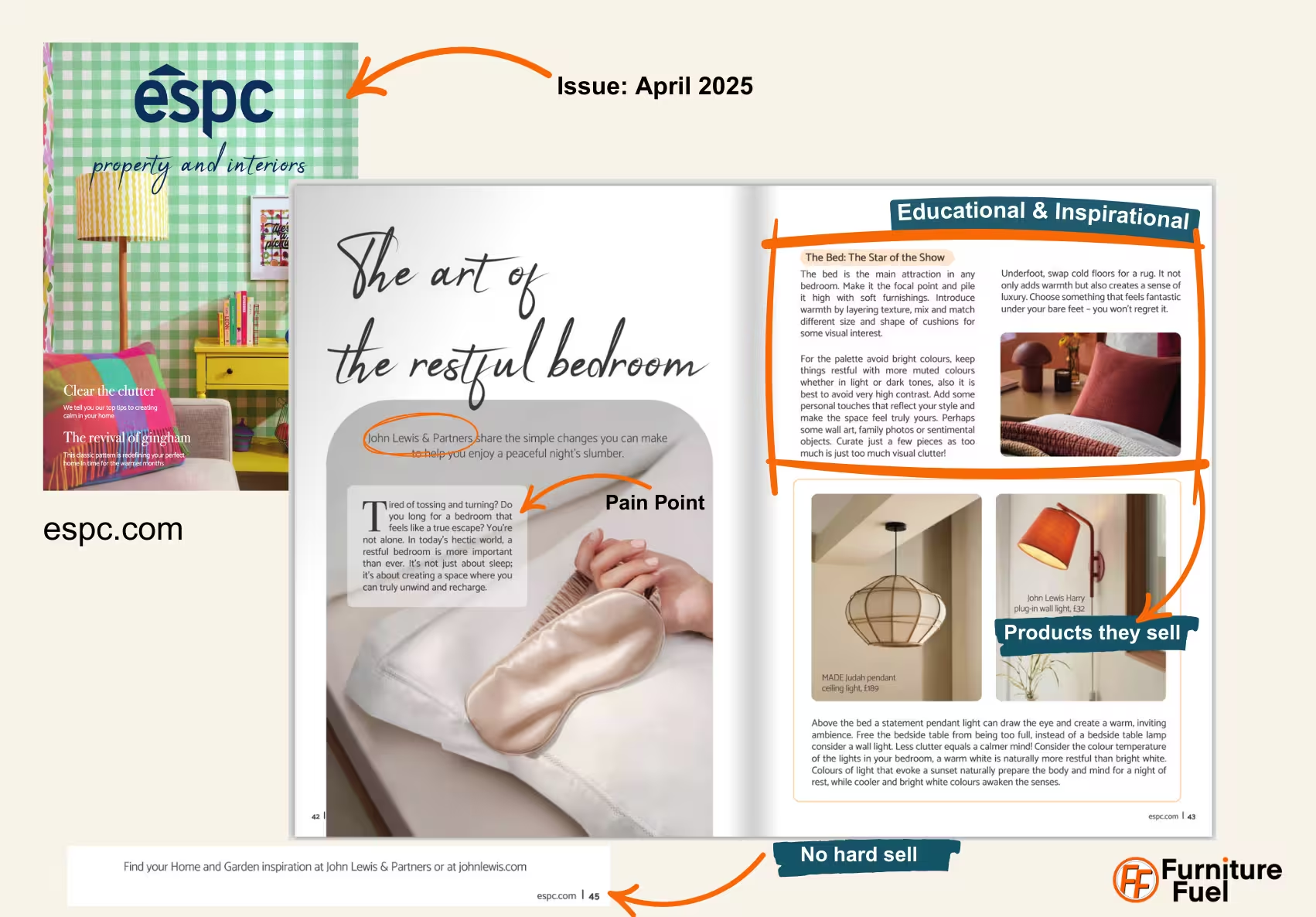
Source: ESPC magazine.
Another fantastic example from the April ESPC, Property and Interiors magazine. The John Lewis advertorial combines education and inspiration. It may even be entertaining to some.
Maximising Social Content Engagement

Source: Asking for What You Want, Sketchplanations, Jono Hey.
Encouraging interaction is key to keeping your audience engaged and can help generate future content ideas. One simple way to do this is by asking questions after your posts.
Not every post needs a direct “buy now” message, but subtle calls to action (CTAs) can help guide engagement:
- Entertaining post? Ask people to tag a friend.
- Inspirational post? Ask what their dream living room looks like.
- Educational post? Offer a more detailed guide in exchange for an email signup.
If you ask, you have a much better chance of getting the outcome you want. Engagement isn’t just about likes, it’s about starting conversations and building relationships.
When done right, these low-commitment CTA invite your audience to get involved, and any reply could spark new content ideas.
Is Video Content King?
The goal was not to discuss any given content type beyond surface level, as this is about establishing the foundations of your social media strategy. However, you hear it everywhere: “Video, video, video!” So, it deserves a special mention, and the truth is, a video won’t save bad content.
Yes, video is fantastic. It grabs attention. It performs well across platforms. Video will probably give you a leg up in grabbing attention versus an image, but if the hook is weak or the content is dull, people will scroll past. Great content—whether video, image, carousel, or even short text posts—always outperforms weak content. Every content type needs work, planning, and testing.
How are you enjoying the content so far? Our weekly newsletter provides quick, digestible content on topics just like this one.
P.S. If you’re not enjoying the content, I would appreciate your feedback. There is a feedback form at the bottom.
Authenticity Matters - "Be a voice, not an echo"
Social media isn’t just about pushing products, it’s about making a connection. Your audience doesn’t want a never-ending feed of sales pitches. They’re looking for content that addresses their needs, emotions, and values.
Take something like Mother’s Day. It’s tempting to run the usual “10% Off” post, it’s easy, but it doesn’t make your audience feel anything. It’s transactional and impersonal.
Amongst a feed of businesses doing the same, it’s common—it’s forgettable. People will scroll right past it.
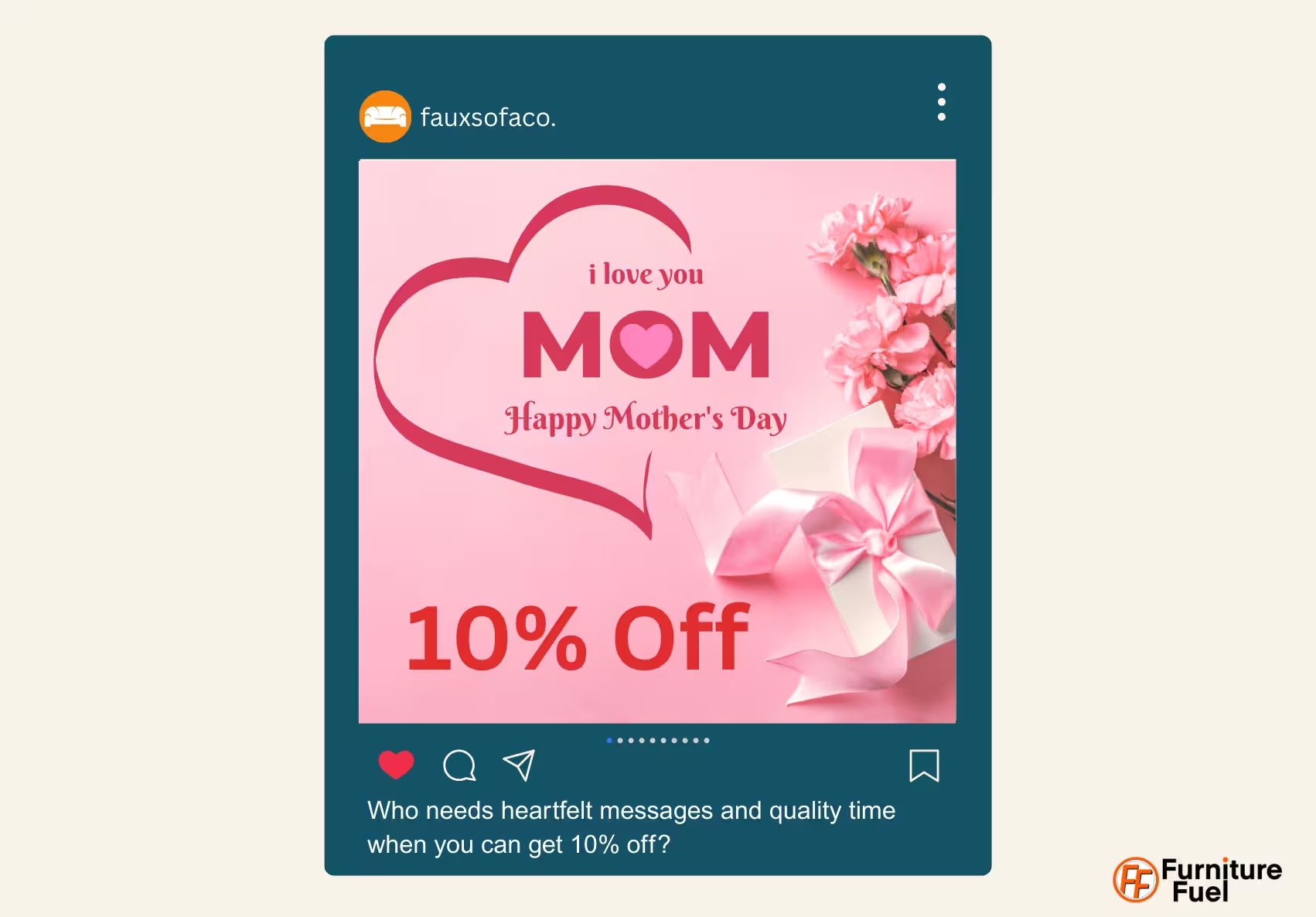
You need to shift the focus from a sales-driven approach to a customer-focused one. What do they actually need?
Create a gift guide that genuinely helps people choose something thoughtful. Don’t just list your bestsellers, think about those overlooked products or accessories that might make the perfect gift. Maybe it’s an elephant statue for a mum who’s always watching videos on them, or a super-soft throw to keep them warm.
Show the human side of your brand. Share what Mother’s Day means to the people behind the business, whether it’s personal stories or how your team celebrates. Done well, this kind of content builds relationships. It might feel like you’re stepping away from selling, but you’re laying the groundwork for long-term loyalty. A customer who feels understood is far more likely to buy from you, if not today, then tomorrow.
And if you’re worried about missing the sale? Don’t. You can go back to the hard sell tomorrow. Today, make the connection.
Considerate Marketing: Opt-Out Options for Sensitive Occasions
When planning content around key dates—like the Mother’s Day example—it’s worth remembering that not everyone will want to receive those messages.
Some brands, like Aldi, take a sensitive and proactive approach by offering customers the chance to opt out. Each year, they send a simple message:
“We understand that some occasions can be tough, so if you’d prefer not to receive Mother’s Day emails, please click the link before Sunday 25th February.”
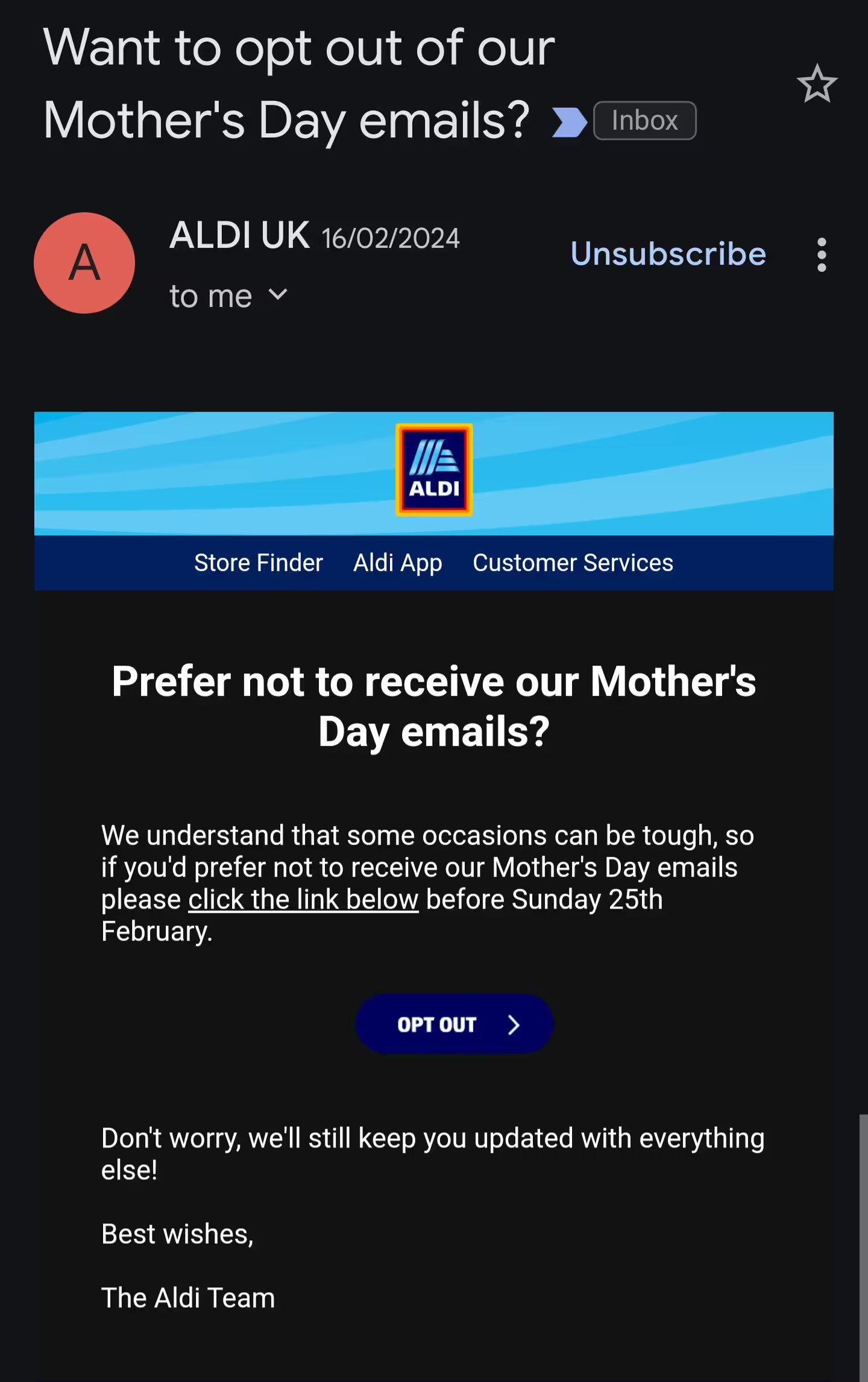
It’s a small gesture, but one that speaks volumes. It shows empathy. It gives people control. And, perhaps most importantly, it builds trust.
While social platforms like Facebook or Instagram don’t let you segment your audience in quite the same way, you can still be considerate in how you approach sensitive occasions. Be transparent. Acknowledge what’s coming up. This allows people to mentally opt out and scroll past if they need to.
“We know this time of year can be difficult for some. Over the next few days, we’ll be sharing some content around [occasion]. We’ll be back to our usual posts from [date].”
It’s about recognising that your audience is made up of real people, with real lives. They aren’t all in the same place. A little sensitivity goes a long way.
Repurpose Old Content
Not everything needs to be shiny and new to benefit your followers. Due to the nature of organic reach, even your existing followers might not have seen your content the first time around. And even if they did, chances are they won’t remember it.
Repurposing content isn’t lazy. An old carousel could become a short-form video. A long video might be cut into multiple short clips. Reposting is perfectly fine as long as the content still delivers value. Just don’t get stuck reposting the same thing week after week.
Avoid Format Fatigue
Ad fatigue, sometimes called ad blindness, happens when people become so used to seeing the same ad or perceive it as irrelevant that they either consciously or unconsciously begin to ignore that ad. However, it isn’t just limited to paid ads—your organic posts can fall victim to the same effect and become background noise.
If every post follows the same structure or visual style, your audience will begin to scroll past without a second thought. To prevent that, mix things up. Rotate your content formats. User-generated content or a picture showcasing a range on display can make customers take notice when you normally post supplier room shots.
That said, don’t lose your identity in the process. Brand consistency matters. Variety should happen within the boundaries of your brand guidelines, keeping things recognisable but fresh.
Not Every Post Has to Be Your Own Content
Every post should ideally reinforce your brand’s values, your products, or your expertise.
That could mean sharing tips, insights, or even links to external articles or resources. For example, if you share a guide, even if someone else wrote it, about cleaning products that can damage furniture, that’s useful, valuable, and trust-building. You are saying to your audience, “Hey, I thought this might be useful to you.”
It might feel strange to share another website’s content, but it’s no different to what I do in these articles. I link to sources or images not because I want to send you away, but because I believe they add value. If content, even from external sources, reinforces your point, then they’re working for you, not against you.
Just make sure the content is accurate and… not from a competitor.
Platform-Specific Strategies
Different platforms call for different approaches. While your core message should stay consistent, how you deliver that message should reflect the audience and format of each platform.
A short-form video might work on TikTok or Instagram Reels but fall flat in a standard Facebook feed. The same message, repackaged for the platform, can make all the difference.
- Instagram/Pinterest – Highly visual platforms. Perfect for styled room setups, user-generated content, and design inspiration.
- TikTok/Reels – Fast-paced, engaging videos. Great for transformations, behind-the-scenes content.
- Facebook – More community-focused. A mix of videos, photos, and conversations works well here. Think polls, helpful tips, or discussion starters.
Choosing the Right Social Media Platforms
What’s the best social media platform for your business? The one your audience actually uses.
If you’re not sure where to begin, start with Facebook. It’s versatile, supports multiple content types, and, being part of Meta, you can manage Facebook and Instagram together through their business suite.
You don’t need to be everywhere. You just need to be where it counts. Start with one platform. Once you’re confident, move on to the next.
Repurpose your best-performing content across channels—but tailor it. The key is not to overwhelm yourself. Quality engagement on a few platforms beats a scattergun approach any day.
Posting Frequency & Consistency
Once you’ve chosen your platform(s), the next big question is: how often should you post?
The answer isn’t daily, necessarily. It’s consistently. Whether it’s three times a week or once a day, the goal is to show up regularly. Social media isn’t a one-hit wonder game—no one’s aiming to be the Baha Men of Instagram. (“Who Let the Dogs Out?” was on repeat in my house. I knew most of the lyrics by heart. No regrets. It even won a Grammy.)
That said… John Hegarty once said, “Better to be known for something than be forgotten for nothing.” And honestly? Who am I to knock a one-hit wonder? They’ll be remembered. Me? Not so much. But let’s face it—your Reel isn’t going to be as cool as the Baha Men. So be consistent.
- Set a realistic schedule – Three posts a week that you stick to beats daily posting that eventually fizzles out.
- Plan a content mix – Rotate your posts between entertaining, inspiring, and educational to keep things fresh. If every post sells, people tune out.
Consistency builds familiarity, and familiarity builds trust. That’s the long game.
Still struggling with what to post? The 80/20 rule may help.
The 80/20 Rule for Social Media: Balancing Content and Sales
The Pareto Principle, better known as the 80/20 rule, covered briefly in our building and sustaining loyalty article, where we discussed how only posting promotional content is one-sided—and loyalty isn’t.
In social media marketing, the 80/20 rule means:
- 80% of your content should provide value. This builds trust, keeps your audience engaged, and positions your brand as more than just a seller.
- 20% can directly focus on selling, because when you’ve already provided value, your audience is far more open to hearing your pitch.
If you’re leading with value, your audience will be far more receptive when it’s time to sell.
The Reality of Social Media Metrics
When it comes to social media, not everything that looks good on paper translates into business success. Yes, algorithms use likes, comments, and other engagement metrics to decide how far your content travels, but these numbers don’t tell the whole story.
For example:
- A post with lots of likes might make you feel great, but it might not drive any actual sales.
- A post with low engagement could spark interest and lead to a purchase.
- The silent followers. Those who never interact but quietly watch your content, learning and considering.
Engagement is just one piece of the puzzle. Someone might view your post, visit your website, or share it in a private message, all without leaving a single visible trace. That’s where dark social comes in, it’s the unseen sharing of content through private channels like WhatsApp, email, or screenshots. You can’t track it, but it’s real.

Dark social refers to the sharing of content through private channels that are not trackable by traditional web analytics tools. Examples include sharing links via messaging apps like WhatsApp, emails, or even screenshots. These interactions are invisible to marketers and analytics platforms but play a significant role in influencing consumer behaviour and purchasing decisions.
Consistency and trust win over time. If a post flops? Repost it later. It may just not have been the right moment. Even big brands have flops.
That said, some attribution is better than none. So, if you’re unsure what’s working:
- Check website analytics to see if there’s a traffic spike after posting.
- Look for patterns. Do certain topics or styles of content drive more site visits or sales?
- Keep an eye on returning visitors. Today’s lurker might be tomorrow’s buyer.
- Compare with competitors. What’s working for them? How can you adapt it for your audience? But do not copy!
If something isn’t landing, test and tweak, just don’t change everything at once. Adjust one thing at a time (image vs. video, caption, post time), and keep a simple change log to track what made the difference. Don’t overcomplicate it. A simple Word document, with the date, social platform and what change was made.
Social media is about community.
Give people a reason to join and stay. Show them who you are and why it matters.
Not Every Post Has to Sell (But Some Can)
It’s not that social media isn’t transactional—it absolutely can be. It’s a key stop on the buyer journey. But that doesn’t mean every post has to sell. In fact, most of your posts shouldn’t, they should help the customer buy through entertaining, inspiring and educational posts.
When you sell something, you’ve already decided what the customer needs, and now you’re trying to convince them why. When you help them buy, you’re giving them the information and confidence to decide for themselves. You’re being informative, not pushy. A gentle nudge at the end isn’t the same as a hard sell.
Social media gives you the platform to show your expertise. It allows you to tell your story, who you are, and why you do it. It helps you build your brand image.
A strong brand reduces risk. Customers know what to expect when they buy from you. If you don’t reduce that risk through your brand, customers will reduce the risk by choosing the cheapest option.
In the end, social media is not about hacking the algorithm. It’s about helping people feel confident hitting “Add to Cart.”
Social Media Strategy Foundations: Essential Quick Checklist
We’ve covered a lot of ground, and to make it easier for you to implement, I’ve compiled the key steps into a practical checklist. Follow each section and tick them off once reviewed, and if you get stuck, refer back to the article for detailed explanations and examples.
☐ Define Your Brand Identity and Audience
(tone, values, target audience)
☐ Commit to Consistency (posting & style)
(frequency, voice, visuals)
☐ Focus on Value-Driven Content (80/20 rule)
(80% – entertain, inspire, educate. 20% – promotions)
☐ Create “Thumb-Stopping” Content
(visuals, storytelling, interactive)
☐ Avoid Over-Promotion
(product benefits, customer stories)
☐ Leverage User-Generated Content (UGC)
(customer photos, reviews)
☐ Be Cautious with Meme Marketing
(use sparingly, ensure rights)
☐ Monitor and Adapt (track metrics)
(likes, comments, shares, saves)
☐ Experiment and Learn (refine strategy)
(test content, use insights)
☐ Stay True to Your Brand Identity
(reflect values, audience needs)


